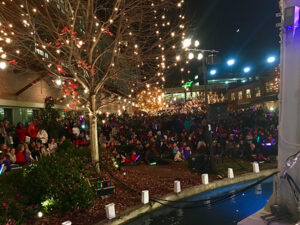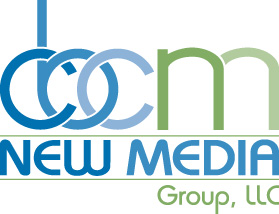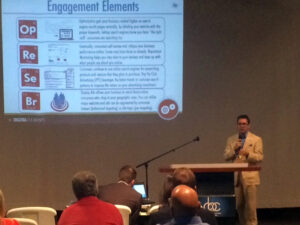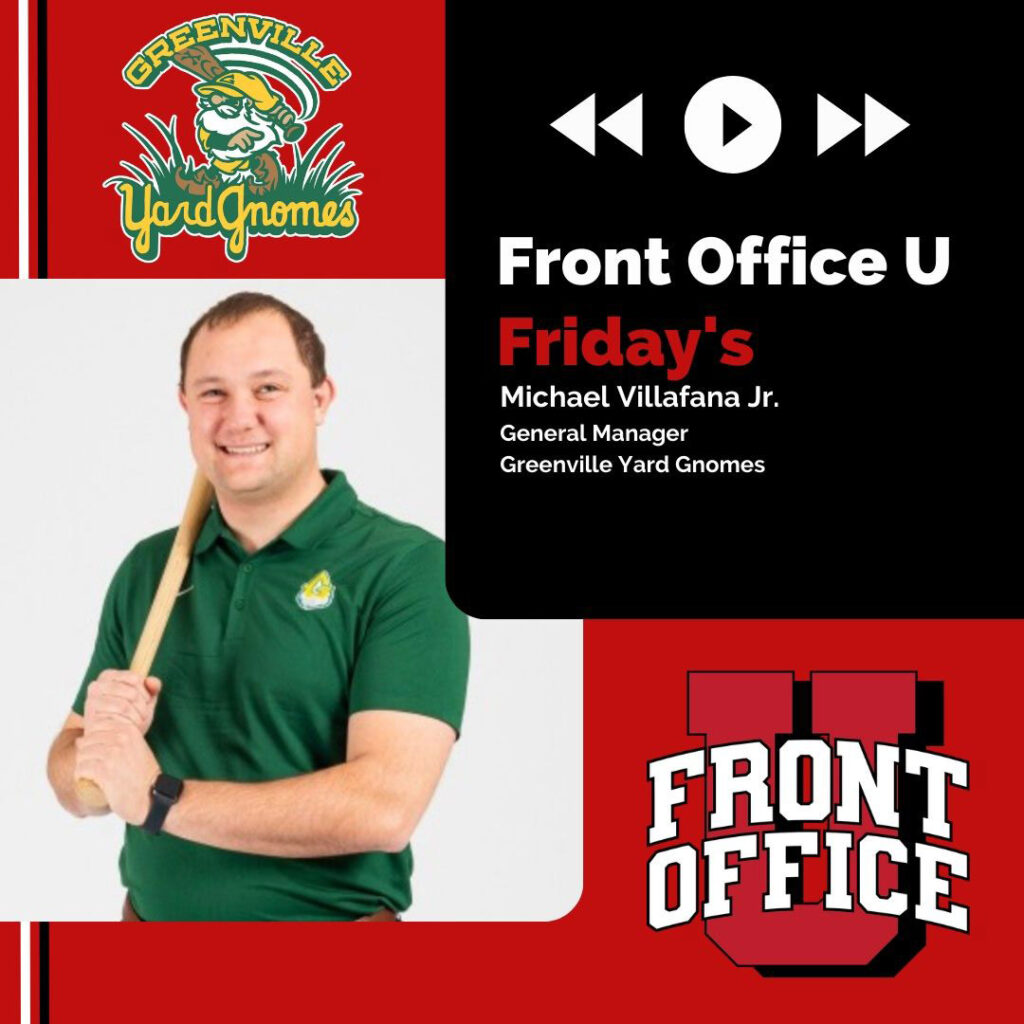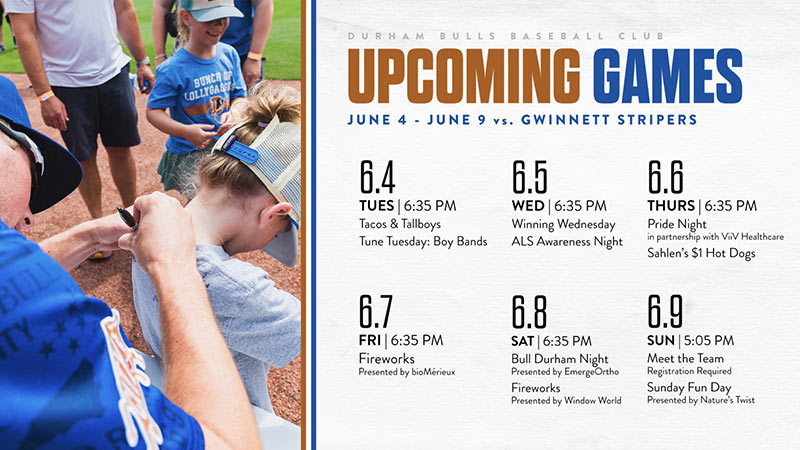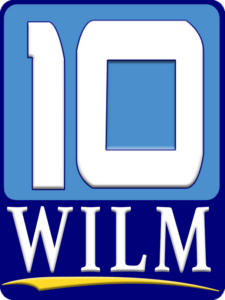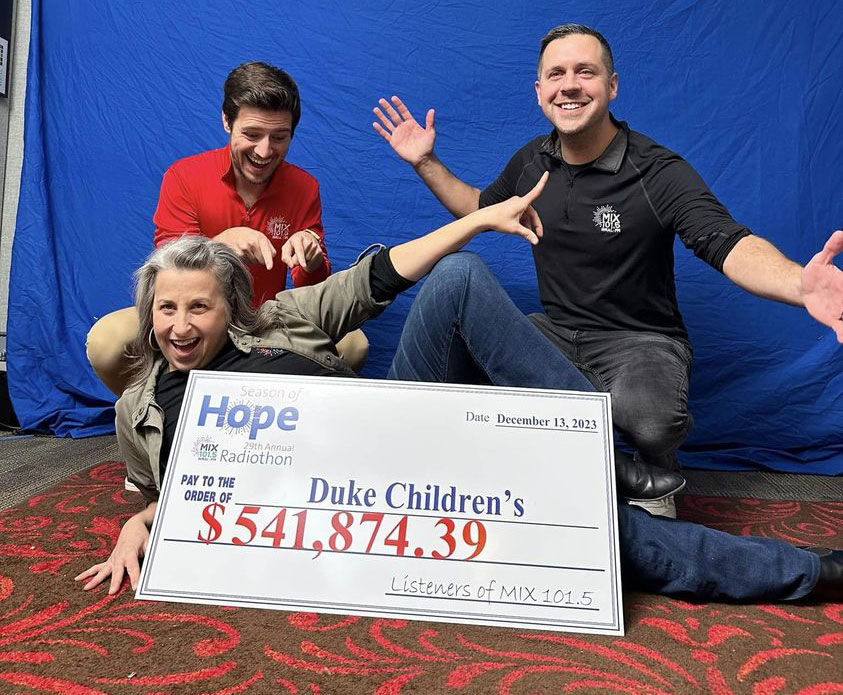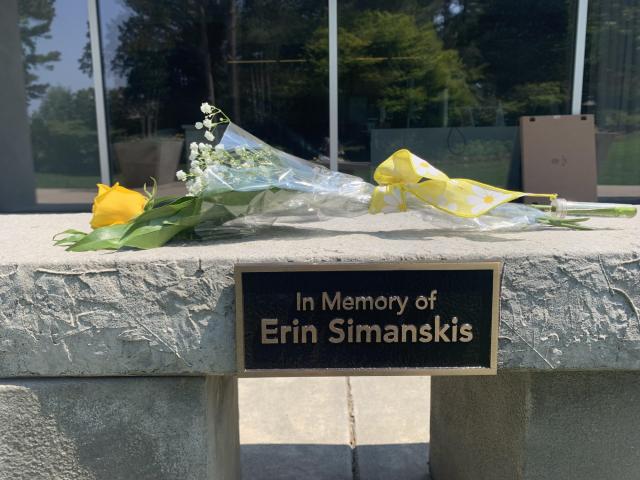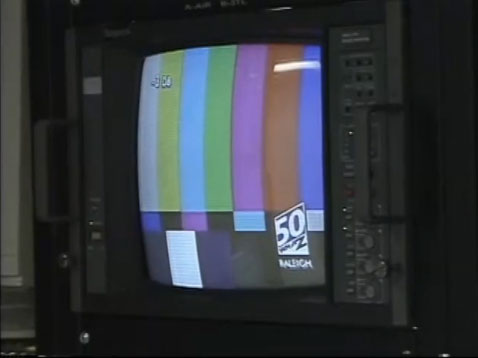American Tobacco Historic District
For over 100 years, the American Tobacco factory on Blackwell Street in Durham produced some of the most famous tobacco products in American History, including Lucky Strike and Bull Durham. But in 1987, American Brands closed the factory, ushering in years of decline and decay in downtown Durham.
In 2002, Capitol Broadcasting Company purchased the 16-acre American Tobacco Campus that lay abandoned in downtown Durham. Through work with city officials, CBC began the largest historic renovation project in the state, with the goal of opening one million square feet of office, retail and residential space to help revitalize the Bull City’s downtown.
In 2004, CBC re-opened the old tobacco campus and began a renovation that would change the trajectory of Durham. Capitol Broadcasting would invest over $200 million renovating the factory buildings into a Class A office, entertainment and residential complex recognized nationally as the definitive example of re-purposed and re-developed historic properties.
The redevelopment of American Tobacco would spur other growth in the area, including CBC’s three Diamond View office buildings and the Durham Performing Arts Center (DPAC).
Small business growth began to take root on Main Street, branching out across the downtown loop to create a restaurant and entertainment district that has been dubbed the Durham Renaissance.
And, underneath the old factory, American Tobacco has become the catalyst for innovation and entrepreneurship. The American Underground has helped launch world-class startups including Smashing Boxes, Two Toasters, Adzerk and BoostSuite.
Today, American Tobacco Campus has over one million square feet of office space, nearly 90,000 feet of residential apartments and 10 restaurants with more on the way.
-
Ukrainian Ambassador Thanks CBC, Bulls for Support Efforts
Capitol Broadcasting recently received a letter of thanks from Oksana Markarova, Ambassador of Ukraine to the United States, for efforts the company, and particularly the Durham Bulls, made to support the people of Ukraine. “From turning the American Tobacco Historic District in Durham into a Ukraine Support zone, to flying blue and yellow colors alongside […] -
Durham Lights Lucky Strike Tower on American Tobacco Campus
In downtown Durham, the American Tobacco Historic District welcomed the holiday season with the 12th annual lighting of the Lucky Strike Tower on December 2, 2016. The festivities included musical entertainment and area school choirs will performed a variety of Christmas songs before Santa and Wool E. Bull take to the stage to help light […] -
Because No One Else Would
“Because No One Else Would” challenges our notion of what it means to revitalize a city.
Starting with the largest surrender of the Civil War, Durham rose to become a 19th century industrial powerhouse with worldwide tobacco brands including Bull Durham and Lucky Strike.
But when the tobacco factory closed in 1987, it took all the jobs, banks and businesses. “Durham was like a ghost town,” says Mayor Bill Bell. The old tobacco factory was used for police training.
In 2004, Capitol Broadcasting Co., Inc. bought the old American Tobacco factory campus and ignited the Durham Renaissance. It’s the story of vision and risk, partnerships and perserverance to rebuild a community.
Written and produced by Hal Goodtree. Directed by Tim Finkbiner and Dan Oliver. A co-production of Goodtree & Co. and Horizon Productions.
Produced in 2014.
-
Goodmon Honored for CREative Thinking for American Tobacco Project
CBC President & CEO Jim Goodmon has once again been recognized for the transformation of the American Tobacco Historic District in downtown Durham. The Counselors of Real Estate Carolinas Chapter (CRE) recently honored Goodmon with a CREative Thinkers Award for the revitalization of American Tobacco and the positive effect it continues to have on the […] -
Santa Helps Light Lucky Strike Tower
In downtown Durham, the American Tobacco Historic District rang in the holiday season with the 11th annual lighting of the Lucky Strike Tower. Kids and parents alike were excited in the hours leading up to the lighting with some families arriving at the American Tobacco Campus as early as 3 p.m. “It’s a good time […]
-
Capitol Sports Radio

The stations of the Capitol Sports Radio group are home to the play-by-play broadcasts of some of North Carolina’s signature teams, including The Carolina Hurricanes, The Carolina Panthers, Duke University and Appalachian State University. Additionally, CSR stations have the rights to the NFL, NBA, MLB and NCAA Men’s/Women’s basketball tournaments.
Capitol Sports Radio’s first entry into the market came on October 10, 2007 when CBC-owned WCMC-FM became known as “99.9 The Fan.“ It was the first time an FM station in the Raleigh-Durham market had carried the sports-talk format fulltime. On December 1, 2008, WCMC solidified its sports position when it became the market’s ESPN Radio affiliate.
At the outset WCMC transmitted from a relatively short tower in Franklin County—northeast of Raleigh. But in 2010, the FCC granted permission to move WCMC’s city of license to Holly Springs and boost its power to 26,500 watts. This boosted 99.9 The Fan’s audience penetration and coverage of the market.
On November 1st, 2009, Capitol Sports expanded its sports holdings with the launch of “620 The Buzz” on WDNC-AM. Shortly after 620 The Buzz was launched, the division added 1550 Deportes WCLY-AM, which is devoted to sports-talk in Spanish.
Capitol Sports most recent addition came in April 2012 when the sports radio division created “99.9 The Ticket” on WRAL-HD3. This new channel can be heard on HD radios and online via the stream.
-
George Habel CBC VP Sports Group
George Habel is CBC Vice President of the Sports Group. Habel started his career in radio while he was a student at Virginia Commonwealth University. It is a career that has served him, Capitol Broadcasting and its clients very well. Habel likes to say that he was “acquired” by Capitol Broadcasting Company instead of him joining CBC back in 1983. As you watch the interview you will find out why.
The interview reveals the vast involvement CBC has had with sports entities over the years ranging from college to NFL teams to NASCAR and, of course, the Durham Bulls baseball team.
Habel is interviewed by John Harris, CBC Director of Special Projects.
-
WCMC country format Jay Butler
Listen to Jay Butler on WCMC when it was a country radio station. This bit of audio is known in the industry as an air-check. You will hear the beginning and end of a song and the program transitions from one element to another.
-
Jim Goodmon Discusses his Carolina Hurricanes Ownership
Jim Goodmon discusses his ownership interest in the Carolina Hurricanes
-
CBC New Media Group
As the technology branch of the Capitol Broadcasting Company family, CBC New Media Group is charged with managing WRAL.com, CBC’s digital channel initiatives, and Albright Digital, a digital solutions provider that aids car dealers with Internet marketing, among others. In addition CBC New Media oversees strategic acquisitions and start-up projects for Capitol Broadcasting Company.
The CBC New Media Group was officially launched in 2005. Jimmy Goodmon, who had held a variety of positions with CBC’s television stations, was named general manager. John Conway, hired in November 1995 as managing editor of WRAL OnLine, was named new media director, with primary responsibility for WRAL.com.
The New Media Group soon launched a directory site called Triangle 411, hiring an inside sales team. In December 2005 New Media acquired Charlotte-based Local TechWire, with former CBC manager Rick Smith as its managing editor.
Also in 2005, News Over Wireless was launched to build mobile websites for WRAL and later other media companies. Sam Matheny, who started work at CBC in 1995 with Capitol Networks, became General Manager of the unit.
One of Sam’s first hires at Capitol Networks was John Clark, who went on to hold a variety of editorial and technical roles inside CBC New Media, including web editor, website programmer, technology director and general manager for WRAL.com.
-
CBC New Media Wins Three First Place Awards in Local Media Association’s 2018 Digital Innovation Contest
The Local Media Association released its slate of 2018 Digital Innovation Contest winners on Wednesday, March 14, 2018, and CBC New Media Group picked up three First Place honors. More than 70 media companies participated in the annual national competition, including, newspapers, TV station, radio stations and digital news sites, submitting entries in 14 categories. […] -
John Conway General Manager CBC New Media
John Conway is General Manager of digital platforms for CBC New Media. Its flagship website, WRAL.com, is the most visited local media site in the North Carolina and is consistently ranked as a top rated television news website in the nation.
Conway first joined Capitol Broadcasting Company in 1995 as the first managing editor of what was then called WRAL OnLine. He has served as WRAL.com’s product development director and creative services director.
Conway is a 1985 graduate of the University of North Carolina at Chapel Hill, where he received a B.A. in journalism. He has worked as a newspaper reporter and editor for newspapers in Raleigh, Greensboro and Orlando. He has held administrative positions with the UNC School of Journalism, including assistant dean for distance education and executive education.
Watch and listen to find out how CBC uses New Media now and anticipates its usage in the future.
-
Digital Marketing Team Elemental at CBC
Two years ago Capitol Broadcasting Company created a new subsidiary, a digital marketing team, under the umbrella of our division CBC New Media Group. Digital Elements emerged as a natural extension of CBC’s commitment to helping local businesses prosper. Keeping It Local A team of six, with a few contractors, works together as the heart of […] -
WRAL Online
WRAL Online was the beginning of WRAL.com, the flaship property of CBC New Media Group that has won numerous journalism awards and has been recognized as a leader nationally among local media sites. The promo was produced in 1997.
-
Interpath launch team
CBC employees who were critical to the development of the company’s internet service – Interpath. Photo came at a 20th anniversary celebration in 2014.
-
Corporate

The roots of Capitol Broadcasting Company date back to 1937. That year Raleigh attorney A.J. Fletcher and four partners decided to form a company so they could compete in a new industry taking hold of a nation still struggling through the Great Depression. The business was broadcasting, and at the urging of his son Frank—a young communications lawyer at the Federal Communications Commission—A.J. Fletcher and his partners formed CBC with the sole purpose of obtaining a license to operate a radio station in North Carolina’s capital city.
The plan worked and on July 28, 1938 the Federal Communications Commission authorized Capitol Broadcasting Company to operate a new 250-watt AM radio station with the call letters W-R-A-L. That FCC action officially established a direct link between the Fletcher family and North Carolina broadcasting that exists today.
A.J. Fletcher was one of five original shareholders in Capitol Broadcasting Company, Inc., but he was not the first president. That distinction went to another local attorney, Earl C. Marshburn, who owned the most shares of the company at the outset. The other original CBC stakeholders were Howard E. Satterfield, Professor of Engineering at North Carolina State University; Attorney Charles E. Green; and E. Johnson Neal, an insurance executive.
As construction of WRAL-AM neared completion in early 1939, Capitol Broadcasting Company was reorganized. A.J. Fletcher purchased the shares owned by Marshburn and Satterfield, bringing his holdings to 105 of the company’s 150 original shares. With financial control firmly in place, A.J. Fletcher became President of Capitol Broadcasting Company, a title he would eventually pass on to his son Fred Fletcher and grandson Jim Goodmon.
Over the next seven decades CBC would establish itself as one of the most respected and innovative communications companies in the nation. The company that started with one tiny AM radio station has diversified to now include holdings in broadcasting, new media, real estate and professional sports.
This corporate expansion began in 1946 when the FCC awarded CBC the license for WRAL-FM, one of the first commercial FM radio stations in the country. The addition of a second radio station acted as a catalyst and set off a wave of innovative growth.
With WRAL-AM and FM as the foundation, CBC formed two pioneering radio networks that broadcast specialty programming across the state and region. The Tobacco Radio Network and the Dixie Network gained acclaim as providers of ACC sports, in-depth agricultural news and live event coverage.
In the early 1950s A.J. Fletcher’s attention turned to television. Mr. Fletcher realized that CBC needed to expand into this promising sector of the broadcast industry, so he set out to bring a TV station into the CBC fold. It would not be easy, but after a monumental struggle and months of arduous hearings at the Federal Communications Commission, CBC won the license to operate WRAL-TV Channel 5 in Raleigh.
WRAL-TV signed on the air December 15, 1956 and went on to become one of the premier local television stations in the nation. The CBC flagship is widely known for its award-winning news operation, technological leadership and far-reaching community service and support.
CBC’s growth and innovation has remained constant throughout its history. The company has founded, acquired and sold numerous business entities since its inception. These assets range from radio and television stations to new media startups, historic properties and professional baseball teams. A comprehensive record of many of these transactions can be found in the interactive timeline near the bottom of the CBC History website homepage.
Over the years CBC has taken on the flavor and persona of its generational family leader – from A.J. Fletcher’s astute business savvy to Fred Fletcher‘s flair for local entertainment to Jim Goodmon‘s fascination with engineering and technology. But no matter who was at the helm, three core values have always served as guiding lights for Capitol Broadcasting Company: an unwavering commitment to excellence, the fearless pursuit of new technology and innovation, and a genuine sense of responsibility to the community. That is how CBC defines success.
-
Front Office U Features Greenville Yard Gnomes GM, Season Continues with Games This Weekend
General Manager of Capitol Broadcasting’s newest baseball club, Minnesota native Michael Villafana came south to lead the Greenville Yard Gnomes. Most recently spent a year as Director of Corporate Partnership Services for the Worcester Red Sox in Massachusetts. Near the start of the season, Front Office U podcast welcomed Villafana to chat about his career […] -
CBC/WRAL Night Helps Bring in Over $26k for PBS NC
Capitol Broadcasting and WRAL-TV continued a decades-long tradition of supporting PBS North Carolina, our state’s public television station, to good result on Tuesday, February 27, 2024. “The Corporate Engagement Team here at PBS North Carolina is truly excited and grateful to announce that Capitol Broadcasting/WRAL’s generous $10,000 corporate match helped us raise $26,497 yesterday!” said […] -
CBC/WRAL Night at PBS NC Supporting Public TV Annual Fundraiser Tonight
Tune in to PBS NC tonight, Tuesday, February 27, 2024, to see WRAL-TV Anchor/Reporter Lena Tillett. No, that’s not a station misprint. Tillett will appear in segments on North Carolina’s public television station, for CBC/WRAL night on PBS NC, marking our 22nd year as a PBS NC Corporate Partner during the spring fundraiser. “Lena Tillett […] -
99.9 The Fan’s Adam Gold Ranked in Top 20 MidMarket Midday Shows in the Nation
99.9 The Fan Sports Talk Host Adam Gold made Barrett Sports Media’s Top 20 MidMarket Midday Shows of 2023. The 9th annual BSM Top 20 series released the list naming Gold on Wednesday, February 7, 2024. An executive panel of 58 program directors and corporate executives from a variety of top broadcasting companies across the […] -
Capitol Broadcasting Honored Among First Greater Triangle Civic 50 for Commitment to Community
Capitol Broadcasting Company has been honored by the first Greater Triangle Civic 50, for the company’s “commitment to the Triangle community and positive corporate citizenship.” The inaugural awards breakfast, hosted by Activate Good, took place at the Raleigh Marriott City Center on Wednesday, October 25, 2023. Points of Light started the Civic 50 in 2012 […]
-
Durham Bulls
The Durham Bulls, America’s most famous Minor League Baseball team, is regarded as one of the premier franchises in the industry. Since Capitol Broadcasting Company bought the team in 1991, the organization has separated itself from its peers, thriving on local, regional and national stages. Under Capitol Broadcasting’s direction, the Bulls have been at the center of the revitalization of downtown Durham, never ceasing to contribute to The Triangle community.
Durham’s first league-affiliated team, named the Tobacconists, took the field in the spring of 1902 and played a schedule comprised of teams from neighboring mill towns. By 1913, the team was renamed the Durham Bulls, an homage to the town’s world famous tobacco brand.
Over the next 67 seasons the team would play in three different ballparks and undergo eight Major League affiliation changes until settling into a long-term partnership with the Atlanta Braves prior to the 1980 campaign. Then in 1988 the film “Bull Durham” put Minor League Baseball and the Bulls on the national stage, as the fictional comedy starring Susan Sarandon, Kevin Costner and Tim Robbins became a hit with diehard and casual baseball fans alike.
In 1991 Capitol Broadcasting Company purchased the Bulls, and the following season the team unveiled mascot Wool E. Bull, who has become one of the most recognized faces in all of North Carolina. Each season, Wool E. makes over 250 appearances at schools, hospitals, parades and more, exemplifying the Bulls’ commitment to The Triangle community and beyond.
By 1995 the franchise had moved to Durham Bulls Athletic Park, a brand new stadium located a few blocks south of the historic Durham Athletic Park which the Bulls had called home since 1926. Following the 1997 season the Bulls began an affiliation with the Tampa Bay Devil Rays, and jumped from the Advanced-A Carolina League to the Triple-A International League. With the change to the Triple-A level, the stadium expanded its capacity to 10,000 by adding six sections of seating beyond the right field wall. Today the stadium’s seating still sits at 10,000, while the Bulls’ and Rays’ 16-year affiliation is tied for the fourth-longest in Triple-A Baseball.
Over the last 25 seasons the Bulls have built a near-dynasty on the field, earning 15 postseason berths since 1991. Since joining the Triple-A ranks, the Bulls have made 13 playoff appearances in 17 seasons, while capturing four league titles.
Prior to the 2014 season the DBAP underwent yet another renovation, this time giving the stadium a complete facelift. New video boards and a new club level, among many other upgrades, gave the stadium a modern feel, while preserving the classic touches that make the ballpark one of the best in Minor League Baseball.
-
North Carolina Courage to be Celebrated by Durham Bulls
A Triangle Crossover Collaboration At The DBAP On Sunday, August 18th The North Carolina Courage will be celebrated during the Durham Bulls home game on Sunday, August 18, against the Nashville Sound at Durham Bulls Athletic Park (DBAP). First pitch is scheduled for 5:05 p.m. ET against the Nashville Sounds with the Courage intertwined throughout. […] -
DBAP to Host All-American Women’s Baseball Classic
October Event Showcases Elite Women’s Baseball at Durham Bulls Athletic Park The Durham Bulls, in conjunction with the All-American Girls Professional Baseball League (AAGPBL) and American Girls Baseball (AGB), announce the All-American Women’s Baseball Classic to be held at Durham Bulls Athletic Park on October 11-13, 2024. The All-American Girls Professional Baseball League was a […] -
Bulls Host Braves Triple-A Squad with Pride Night, Bull Durham Night, Two Fireworks Shows, Meet the Team and More
Tacos & Tallboys Tuesday with Tune Tuesday, Winning Wednesday, Dollar Dog Thursday, Kids Run The Bases & more also on tap The Durham Bulls return to Durham Bulls Athletic Park on Tuesday, June 4 to begin a twelve-game homestand, starting with a six-game series versus the Triple-A affiliate of the Atlanta Braves, the Gwinnett Stripers. […] -
Durham Bulls To Host MLB’s Home Run Derby X Tour
MLB, Softball & Women’s Baseball Stars To Compete At DBAP September 7th The Durham Bulls, in conjunction with Major League Baseball, will host the final event of MLB’s Home Run Derby X tour on September 7, 2024. Major League Baseball today announced that Home Run Derby X, an exciting new baseball format built around power […] -
Durham Bulls Home Opening Day Through the Eyes of a New HR Staffer
The Durham Bulls took on the Jacksonville Jumbo Shrimp in the home opener at the Durham Bulls Athletic Park on Tuesday, April 2, 2024. The night was a first-ever opening day at the DBAP for Corp HR Business Partner Michelle Brooks, who joined Capitol Broadcasting in March. Diving in headfirst was a bit of a […]
-
Microspace
Capitol Broadcasting Company founded Microspace Communications in 1988 to deliver critical data, video and audio content to business clients.
The Microspace technology was developed in the mid-80s to solve a competitive problem for Seeburg Music, another CBC company. Seeburg provided background music for businesses, but was struggling against three much larger national competitors.
Seeburg set out to bypass those competitors by developing a way to deliver the music directly to each business via satellite. Seeburg and its partners developed technology that utilized a small receiving dish and cost less than $500 and–in the process–created a disruptive technology that upended the entire business music industry.
Seeburg was sold to make way for a new CBC company that would capitalize on the revolutionary satellite technology. As a result, Microspace Communications was formed in 1988 and almost immediately—all three of Seeburg’s former national competitors became Microspace customers. Soon, companies delivering stock quotes, weather data and paging messages came on board and were beaming their signals throughout the United States.
The growth didn’t stop at American borders. Microspace began to grow internationally, introducing service to Europe, the Caribbean and Latin America.
The company is a leading provider of point-to-multipoint satellite services and operates one of the largest business satellite networks in the world, with over a quarter of a million receive sites positioned around the globe.
Microspace offers dozens of unique applications and the list of services and markets served continues to grow. The company’s trademark VELOCITY service supports customers such as Morgan Stanley, Abercrombie and Fitch and The Christian Radio Consortium with services ranging from business TV, distance learning, digital signage, digital cinema and web hosting, among many others.
-
Microspace and Bible Broadcasting Network Forge Strategic Partnership to Expand Religious Audio Content Distribution into Latin America
Microspace, a leading content distribution company headquartered in Raleigh, North Carolina, is pleased to announce the finalization of a groundbreaking agreement with Bible Broadcasting Network (BBN). This strategic partnership will see Microspace spearheading the distribution of religious audio content to multiple countries in Latin America, reinforcing both companies’ commitment to expanding their global reach. The […] -
Microspace Engineers Satellite Media Tour Featuring Doctor Dispelling COVID Myths
Microspace engineered a Satellite Media Tour (SMT) for their client Three Dimensions Production last Wednesday, October 6, 2021. Entitled “Dispelling Myths and Misinformation: About COVID-19 & the Vaccines,” the interviews featured Dr. Ryan Stanton in the Microspace Video Services Studio. Stanton is an emergency physician with Central Emergency Physicians in Lexington, KY, and the traveling […] -
Microspace Refreshes Brand To Reflect Greatest Strength
Microspace Communications, a leading satellite and cellular data service provider, recently announced a rebrand of its logo and tagline to showcase its greatest asset, connectivity. The rebrand highlights the connections they have been able to build with their clients, as well as their ever-expanding service offerings that allow clients to connect anywhere in the world […] -
Microspace Announces Hire of Vice President & General Manager
Microspace Communications, a leading satellite services provider owned by Capitol Broadcasting Company, has hired a new executive leader. Jimmy Goodmon, President and COO of Capitol Broadcasting, announced Thursday that Cyrus Wilson has been named Vice President and General Manager. Wilson brings more than 20 years of experience in satellite communications, operations and customer management, and […] -
The Greatest of All Time at WRAL-TV
Three years after becoming the heavyweight champ, Muhammad Ali paid an impromptu visit to WRAL-TV. Thanks to quick thinking by a young crew member, Ali ended up being interviewed for the late newscast. Dave Scoggins, a 36-year employee of Capitol Broadcasting who now works as a Satellite Senior Systems Engineer at Microspace, had the famous […]
-
Tobacco Radio Network

The Tobacco Radio Network (TRN) was a pioneering radio cooperative owned and operated by Capitol Broadcasting Company.
Begun in 1942, the network was originally a loose-knit organization of six local radio stations in Eastern North Carolina which were “hooked up” by phone lines to simultaneously broadcast programs of special interest, including agricultural features, sports events, and news of the state capital.
The six original network stations were all in Eastern North Carolina, the heart of flue-cured tobacco production in the United States, and that was the impetus of the “Tobacco Radio Network” name.
The network’s core mission was to educate farmers and keep them informed of the latest agricultural news, techniques and market standings. Under the leadership of CBC Farm Director Ray Wilkinson, the network grew to include 370 radio stations in six Southeastern states—Virginia, North Carolina, South Carolina, Georgia, Florida and Alabama.
TRN was Capitol’s first network venture, but others followed. In the late 1940s, CBC formed the Dixie FM Network to promote the new FM broadcasting format. Special programming such as sporting events was made available exclusively on FM to create interest in the new radio band.
The Dixie Network combined with the Tobacco Network stations formed the nucleus of yet another partnership – The Tobacco Sports Network, which carried North Carolina collegiate football and basketball games statewide. The Tobacco Sports Network was the first in the Southeastern United States to produce live sports coverage of major football and basketball games on a network basis.
WRAL Sports Director Ray Reeve was a mainstay on the Tobacco Sports Network, broadcasting play-by-play coverage of countless Atlantic Coast Conference games and helping to raise the profile of the league itself.
In 1959, the two networks were merged into the Tobacco Network and later that became the Capitol Agribusiness Network.
In 1996, all of Capitol Broadcasting’s radio networks were restructured and merged into the North Carolina News Network.
-
Rudolph Scott
Manager of the Tobacco Radio Network in 1948
-
Ray Wilkinson, well known farm reporter, retires from WRAL
This promo honors the work of Ray Wilkinson, well known farm reporter and vice president at Capitol Broadcasting Company. Ray joined CBC in 1963 and retired in 1995. Please more about Ray Wilkinson and his enormous contributions to the farming community and his time at WRAL chronicled on this website.
-
Outstanding in his field
Farm Director Ray Wilkinson in a comfortable location reporting on crops in North Carolina.
-
Ray Wilkinson on the job
CBC Farm Director Ray Wilkinson working a story for the Tobacco Radio Network and WRAL-TV.
-
Tobacco Network promotional ad
Advertisement touting the experience of TN announcers Dix Harper, Ray Wilkinson and Ken Tanner.
-
WILM-TV
WILM-TV in Wilmington, NC is the most recent addition to the Capitol Broadcasting Company lineup of television stations.
CBC purchased the station in December 1999 when it was a low-power outlet known as WSSN. That station was an affiliate of the UPN network at the time, but things would change once Capitol took control.
CBC soon changed the station’s call sign to WILM-TV and successfully negotiated a deal with CBS that would bring the Tiffany network to Channel 10 in Wilmington. On March 23, 2000, WILM-TV re-launched as the CBS affiliate serving the Wilmington market.
Since Wilmington is a coastal community, hurricanes, storms and summer beach forecasts are always big news and top-of-mind for viewers. In order to serve that need, WILM-TV adopted the slogan “Wilmington’s Weather Station” and positioned itself as the best source of weather information in the market.
In 2008 WILM made history as the first CBS affiliate in the country to make the transition to full-time digital broadcasting. That year the Federal Communications Commission had selected the Wilmington, NC television market to serve as a test-bed for the upcoming nationwide digital TV transition. CBC engineers led the way and set about equipping WILM for the momentous switch. All of the station’s analog equipment was replaced with modern digital technology, including the main transmitter at WILM’s tower facility near Delco, NC.
On September 8, 2008, WILM-TV and other television stations in Wilmington, NC shared the national spotlight as they turned off their analog signals and officially launched the age of digital broadcasting in the United States. FCC Chair Kevin Martin joined station and city leaders at a ceremony to mark the occasion.
The move to digital gave WILM new, untapped channel capacity and station has made the most of it. On December 1, 2013 WILM added the MeTV network to its broadcast lineup. MeTV programming is broadcast on digital channel 10.2, giving Wilmington viewers yet one more source of entertainment.
-
Heather Gray Named Interim General Manager of WRAL-TV and FOX 50
Leadership change at Capitol Broadcasting Company’s WRAL-TV/FOX 50 Capitol Broadcasting Company, Inc. (CBC) today announced that longtime local media leader Heather Gray has been named Interim General Manager of WRAL-TV (NBC) and WRAZ-TV/FOX 50 (FOX). Gray, who currently serves as Station Manager for WRAL-TV, FOX 50, and WILM-TV, steps into this leadership role to oversee […] -
WRAL Documentary: Home Economics Premieres Wednesday, Mar. 17th at 7:30pm on WRAL
Premieres on WRAL-TV, WILM-TV, wraldocumentary.com, Amazon Fire TV, Apple TV, Roku and Samsung Smart TV Wednesday, March 17 at 7:30 p.m. Premieres on WRAZ FOX 50 Saturday, March 20 at 5 p.m. Raleigh is the second fastest growing major metro area in the nation. Businesses and people are moving here because it has earned a […] -
WRAL Documentary: MaryAnn Premieres Wednesday, Jan. 13th at 7:30pm on WRAL
Warm. Giving, Caring. Compassionate. Those are just some of the adjectives used to describe MaryAnn Black from people who knew and worked with her. “MaryAnn” premieres on WRAL-TV in Raleigh and WILM-TV in Wilmington on Wednesday, January 13 at 7:30 p.m. and on WRAZ Fox 50 on Saturday, Jan. 16 at 5 p.m. Black was […] -
Capitol Broadcasting Company and DISH Renew Multi-Year Retransmission Agreement
Locally-owned and operated Capitol Broadcasting Company (CBC) announced today it has secured a long-term deal with DISH Network L.L.C. for retransmission of WRAL-TV, WRAZ-TV and WILM-TV in the Raleigh, N.C. and Wilmington, N.C. markets. The deal was completed months in advance of the contract expiration date. “We are pleased to announce the renewal of our […] -
WILM-TV Becomes Independent Station on January 1st
More WRAL News, More Sports, and More Great Entertainment! WILM-TV will start the new year with a big change. As the ball drops at midnight on January 1, 2017, WILM will go independent! So, what exactly is an Independent Station? Simply said, an Independent Station is unaffiliated with any network. In other words, WILM will […]
-
WRAL AM
Capitol Broadcasting Company was formed in 1937 for the purpose of applying for a 250-watt AM radio station in Raleigh.
With encouragement from his son Frank, an attorney at the fledging Federal Communications Commission (FCC), A.J. Fletcher and four other original CBC stockholders applied for a license to run an AM radio station in the state capital.
Not only did Frank Fletcher urge his father to get into radio, he came up with the station’s call letters that would proudly claim the identity of North Carolina’s capital city – WRAL, as in RALeigh.
The FCC granted CBC the license on July 28, 1938, and on March 22, 1939, WRAL-AM went on the air from studios at 130 South Salisbury Street in Raleigh. The station’s transmitter was located east of town on the East Davie Street Extension (later known as South Bart Street).
WRAL-AM started as an independent broadcast outlet, but it joined the Mutual Broadcasting System in September of 1939. In 1942, A.J. Fletcher’s oldest son Fred was named WRAL-AM’s General Manager.
WRAL-AM’s early programming was a mix of live and network material. “Tuning in with Fletcher”, gospel shows and pioneering programs for the African-American community all enjoyed regular programming slots.
“Tempus Fugit” began on WRAL-AM around 1940 when Fred Fletcher – tired of having to fill in for morning announcers who failed to show up – took over the morning announcing shift at the station. Fletcher entertained listeners with a variety of regular features, news, weather, music and fun. He also created special call-in segments like “Lost and Found” and “Trading Post” where listeners would swap items in an on-air exchange program.
The best-known segment on Tempus Fugit was the reading of a fairy tale each morning. The idea came about in late 1941 to entice children to listen to the show in hopes of luring their parents to the radio as well.
Fred Fletcher read the fairy tales live, doing all the different voices and sound effects himself. Within months, ratings went up and by 1945 Tempus Fugit was beating the NBC World News on WPTF-AM. Fletcher’s local fame skyrocketed and from that point on he was known to listeners as “The Fairy Tale Man.”
Bill Currie was hired as the first News Director at WRAL-AM, but he was better known for his sportscasting abilities. Currie delivered colorful game descriptions with a biting wit and engaging style. He later became the radio voice of the UNC Tar Heels, and when a Sports Illustrated article dubbed him “The Mouth of the South,” a legend was born.
WRAL-AM’s other legendary sports announcer was Ray Reeve, who gained statewide fame during a storied radio and television career. Reeve’s distinct play-by-play style and raspy voice endeared him to thousands of sports fans. He became best known as the first voice of Atlantic Coast Conference basketball after the league was formed in the early 50s. Many sports historians credit the early growth of the league in part to Reeve’s compelling basketball broadcasts.
WRAL-AM went through a series of leadership changes in later years. In 1956 Bill Currie was named Station Manager, replacing Fred Fletcher, who moved to television as the President and General Manager of WRAL-TV. In 1959 Currie was appointed Director of Radio for CBC. He left the company in 1962, and Marion “Tommy” Tucker became Director of Radio.
In 1964 the station joined the ABC radio network. In 1965, Capitol Broadcasting sold WRAL-AM to focus more attention on developing WRAL-FM.
-
WRAL Radio ratings card
1949 ratings promotional flier for WRAL AM
-
WRAL Radio 20th anniversary broadcast
CBC President AJ Fletcher speaks at anniversary ceremoney for WRAL Radio in Marcy 1959.
-
Fairy Tales by Fred Fletcher Volume Nine
Fred Fletcher, eldest son of CBC founder A.J. Fletcher, helped launch WRAL-AM in 1939 and soon made a name for himself as the host of a daily talk show called “Tempus Fugit.” Fred would entertain, inform and hold forth with a cast of characters that included his most memorable persona –the lovable “Fairy Tale Man.” During every show Fred would transform into a master storyteller to read the classics from the Brothers Grimm. He was the proverbial one-man-band who created his own sound effects and made up the voices of all the characters. Listeners young and old loved it, and before long “Tempus Fugit” was the top-ranked show in its time period.
Listen to volume nine of “Fairy Tales” as told by Fred Fletcher. These vintage audio recordings of live radio broadcasts are believed to have aired during the 1940’s decade.
The Rat Catcher 00:00 – 09:30
Prince Hyacinth 09:36 – 17:12
Country Mouse, City Mouse 17:20 – 22:09
Brother Rabbit, The Whale 22:12 – 28:27
& the Elephant
Hansel & Gretel 28:28 – 35:48
The Fisherman and his Wife 35:55 – 43:36
Johnny and the Three Goats 43:31- 50:19
The Toad and the Diamonds 50:24 – 56:56 -
Fairy Tales by Fred Fletcher Volume Eight
Fred Fletcher, eldest son of CBC founder A.J. Fletcher, helped launch WRAL-AM in 1939 and soon made a name for himself as the host of a daily talk show called “Tempus Fugit.” Fred would entertain, inform and hold forth with a cast of characters that included his most memorable persona –the lovable “Fairy Tale Man.” During every show Fred would transform into a master storyteller to read the classics from the Brothers Grimm. He was the proverbial one-man-band who created his own sound effects and made up the voices of all the characters. Listeners young and old loved it, and before long “Tempus Fugit” was the top-ranked show in its time period.
Listen to volume eight of “Fairy Tales” as told by Fred Fletcher. These vintage audio recordings of live radio broadcasts are believed to have aired during the 1940’s decade.
Snow White part one 00:00 – 08:42
Snow White part two 08:45 – 17:12
Six Swans 17:20 – 26:00
Henny Penny 26:07 – 31:30
Twelve Huntsmen 31:33 – 37:37
White Snake 37:40 – 44:11
Sweet Heart Roland 44:13 – 53:33 -
Fairy Tales with Fred Fletcher Volume Seven
Fred Fletcher, eldest son of CBC founder A.J. Fletcher, helped launch WRAL-AM in 1939 and soon made a name for himself as the host of a daily talk show called “Tempus Fugit.” Fred would entertain, inform and hold forth with a cast of characters that included his most memorable persona –the lovable “Fairy Tale Man.” During every show Fred would transform into a master storyteller to read the classics from the Brothers Grimm. He was the proverbial one-man-band who created his own sound effects and made up the voices of all the characters. Listeners young and old loved it, and before long “Tempus Fugit” was the top-ranked show in its time period.
Listen to volume seven of “Fairy Tales” as told by Fred Fletcher. These vintage audio recordings of live radio broadcasts are believed to have aired during the 1940’s decade.
Little Two Eyes 00:00 – 07:25
The Pink 07:28 – 15:30
Lambikin 15:32 – 21:27
Seven Ravens 21:28 – 27:00
Jack & the Beanstalk 27:01 – 37:08
Cinderella 37:10 – 44:40
Fundervogel 44:44 – 50:48
Turnip 51:15 – 57:45
-
WRAL-FM

In the 1940s Capitol Broadcasting Company began looking for ways to grow its business. WRAL-AM, the company’s only radio station, had been on the air since 1938, but at only 250 watts — the station’s signal barely reached beyond the Raleigh city limits. Despite lots of creative marketing and popular local programming, the AM station’s audience was hard to expand with such a limited signal.
So in true CBC fashion, the company began looking at a promising new form of radio called FM, or “frequency modulation.” Few listeners had FM sets at the time because there were very few FM stations on the air. But FM radio offered a signal that was technically superior to that of AM, and technical superiority was always of interest to CBC.
Never afraid of the unknown, Capitol Broadcasting set its sights on an FM station of its own. On September 6, 1946, the FCC granted CBC a license to operate WCOY-FM – only the second FM station licensed in North Carolina.
CBC quickly changed the station’s call letters to WRAL-FM and increased the power to a staggering 250,000 watts. Then it was time to begin building an audience for the new station.
Led by WRAL General Manager Fred Fletcher, CBC began producing unique programming that would create a separate identity for its new FM station. Rather than simply “simulcasting” shows from WRAL-AM, Capitol created unique programming that could only be found on FM.
WRAL-FM broadcast a mix of easy-listening music, agricultural reports and numerous live sporting events as it built an audience in those early days. Before long it became the flagship station for the Tobacco Radio Network, allowing CBC to put its new FM signal to work as a money saver for all the member stations in Eastern North Carolina. The TN stations were now able to receive network programming directly from WRAL-FM and no longer had to subscribe to expensive phone lines for the feeds. It was one of the earliest innovations in CBC broadcast history.
In the 1970s WRAL-FM adopted the “Adult Contemporary” musical format and eventually branded itself “MIX-101.5.” Morning host Bob Inskeep was one of the station’s most popular and successful personalities. Inskeep joined WRAL-FM in 1974 and won legions of fans during a fifteen-year CBC career.
Inskeep was followed by Bill Jordan, who teamed with a number of co-hosts to carry on the station’s morning show success. Jordan retired in 2013 after 23 years as the best known “voice” of the station.
Through the years WRAL-FM has continued its commitment to technological innovation and excellence. In December 2002 it became one of the country’s first licensed commercial radio stations to broadcast in HD Radio, which allows it to split the radio signal into multiple program streams.
WRAL-FM has also received numerous honors for its community service, news reporting and public affairs programming.
In 1983 WRAL-FM and its corporate partner North Carolina News Network won the coveted George Foster Peabody Award for a series of reports focusing on victims across all walks of life.
In 1996 the station won the prestigious NAB Crystal Award for Excellence in Community Service. The NAB judges lauded WRAL’s fundraising for victims of the Oklahoma City bombings, support of Duke Children’s Hospital and a host of other community projects benefitting needy citizens. Thirteen years later – in 2009 – the NAB once again honored WRAL-FM with the national Crystal Award, citing the station’s numerous efforts in the community.
WRAL-FM’s best known community service project began in 1994 as a fundraising effort for Duke Children’s Hospital. The station’s annual “Radio-Thons” have raised more than $15 million in the years since.
-
Applications Being Accepted for 2024 WRAL Azalea Celebration
The 38th Annual WRAL Azalea Celebration is now accepting applications from non-profits for the 2024 plant giveaway. Sponsored by WRAL-TV, MIX 101.5 WRAL-FM, FOX 50, WRAL.com and NC Beautiful, the Azalea Celebration promotes environmental education, beautification and stewardship by awarding azalea plants to non-profits in North Carolina. All applications must be postmarked or emailed by […] -
A Different DJ in the MIX Studios: Wolfpack Pride in the House
The WRAL-FM studios had three very special guests on Thursday, April 11, 2024. NC State basketball stand-out DJ Horne and his parents stopped by to chat with the MIX Mornings crew. The staff gave the trio a rousing ovation as they made their wall through the halls to talk to Kyle, Bryan and Sarah. ICYMI. […] -
MIX Welcomes Meghan Lamontagne to Middays “Mean Girls” Style
WRAL-FM MIX 101.5 welcomes a new midday host starting Monday, February 12, 2024. Meghan Lamontagne will debut in 10am – 3pm slot. Multimedia Personality at MIX 101.5! “In addition to her midday shift, Meghan will focus on content creation across our social media, podcasting, and video platforms,” said CBC Radio General Manager Brian Grube. […] -
WRAL-FM’s Diane Ramsey Announces Retirement
A big announcement was made on MIX 101.5 this morning right before the 10am hour. Diane Ramsey is retiring after 35 years behind the mic at WRAL-FM. She shared the news at the conclusion of MIX Mornings with Kyle, Bryan and Sarah, with guys kindly supporting her. (Sarah had the morning off.) This week will […] -
29th Annual MIX 101.5 Radiothon Raises Over Half Million $ in Two Days for Duke Children’s
WRAL-FM made the big announcement on the evening of Thursday, December 13, 2023, after two days on the air with the MIX 101.5’s 29th Annual Radiothon for Duke Children’s Hospital. The grand total raised tallied over $540,000! “Over a half million dollars raised for the kids at Duke Childrens! $541,874.39 to be exact…but who’s counting,” […]
-
WRAL-TV
WRAL-TV can trace its history to 1939, when Capitol Broadcasting Company founder A.J. Fletcher and son Fred saw a television demonstration at the World’s Fair in New York City. Both were fascinated by the flickering pictures on the small oval screen, but TV at the time was still very much a novelty.
Fast forward to the early 1950s and post-war America; the sale of TV sets was beginning to boom and A.J. Fletcher was determined not to miss out on the potential of the exciting new medium. On October 17, 1953, Capitol Broadcasting Company formally applied for a license to operate a television station in Raleigh, North Carolina. With that, the battle for Channel 5 had begun.
Two companies wanted Channel 5 – Capitol Broadcasting and the much larger Durham Life Insurance Company—owner and operator of WPTF-AM, the dominant radio station in the region. Since two applicants wanted the same channel, a competitive hearing was scheduled to determine which company was better suited to hold the license.
The proceedings began in Washington, DC in April 1954 and went on for nine long months. CBC was the decided underdog, but A.J. Fletcher had come to Washington with a savvy legal team and a mountain of supporting documentation. CBC also benefitted greatly from the wise counsel of A.J. Fletcher’s son Frank, who used his prior experience as an FCC attorney to great advantage.
The competition was fierce; Durham Life’s attorneys relied on the company’s radio experience and corporate muscle as they argued for the license. CBC positioned itself as a truly local broadcast company whose officers and managers would actually operate the station, unlike Durham Life.
When the FCC rendered its verdict in the summer of 1955 – it agreed with the hearing examiner that Capitol Broadcasting Company should be awarded the license for Raleigh’s channel 5. CBC had won and once again—David had beaten Goliath.
WRAL-TV went on the air December 15, 1956. Standing beneath the station’s 1100-foot transmission tower, the tallest east of the Mississippi River, A.J. Fletcher said “and now, to the almost two million North Carolinians within reach of our signal, we say happy viewing and listening to all of you on Channel 5.”
Fletcher’s introduction was followed by the classic holiday movie “Miracle on 34th Street.” More than three years had passed since CBC applied for the license, and at last it was official—Raleigh had a new television station.
WRAL-TV went on the air in 1956 as an NBC affiliate, but signed on with the up-and-coming ABC network in 1962. That relationship lasted until 1985, when the station became an affiliate of the CBS Television Network. WRAL partnered with CBS for 30 years, but on February 29, 2016–history came full circle and TV5 once again affiliated with the NBC television network.
Network partnerships have played an important role in WRAL’s success, but the station also has a long and distinguished history of locally-produced programming. Some of the most memorable shows from the station’s early days were produced with children in mind. The earliest of these programs featured Herb Marks, who portrayed submarine skipper “Cap’n Five” as the host of a daily cartoon show that ran for several years in the late ‘50s.
Then in 1961 the multi-talented Paul Montgomery began hosting “Time for Uncle Paul,” a cartoon and variety show that aired for 20 years and became the most beloved program in WRAL-TV history. Thousands of youngsters visited the WRAL studios over the years to appear on the show and “march with Uncle Paul.”
Over the years WRAL continued to produce memorable local programs for children. Shows like “Frog Hollow,” “Sparks,” “Central X-press.com” and “Androgena” were consistently honored as some of the best educational programming in the nation.
WRAL-TV also won acclaim for local programming that broke racial and gender barriers. The station premiered “Teenage Frolics” in 1958. “Frolics” was a weekly dance and variety show featuring J.D. Lewis, who made history as one of the nation’s first black hosts on local television.
“Femme Fare—WRAL-TV’s Magazine of the Air for the Modern Woman” was another landmark program that aired on Channel 5 from 1963 to 1977. WRAL Woman’s Director Bette Elliott hosted the daily program that featured regular segments on cooking, sewing and flower arranging, but also delved into serious topics such as women’s health, business issues, the arts and culture.
The 1960s would see the rise of another WRAL icon – Jesse Helms, who delivered CBC’s corporate editorial positions in daily “Viewpoint” editorials. Helms’ fiery, conservative commentaries stirred passionate debate—winning admirers and enemies alike while making him a household name in North Carolina. In 1972 Helms rode that popularity to the US Senate, where he would serve five terms.
While the station gained recognition for its local programs and editorials, WRAL-TV’s news operation was steadily building a stellar reputation. Early Channel 5 newscasters Bill Armstrong and Sam Beard laid a solid journalistic groundwork for success, but another WRAL anchorman would be the one to galvanize the station’s news image and become a legend in the process.
That man was Charlie Gaddy, a former radio personality who joined WRAL-TV in 1970. Gaddy worked first as host of a morning variety show, but in 1974 station managers named him primary news anchor, which would make him the face and image of WRAL-TV for the next twenty years.
TV-5’s new anchorman was a catalyst for success, and by the late 1970s Gaddy, co-anchor Bobbie Battista, weathercaster Bob DeBardelaben and sports anchor Rich Brenner formed one of the most heralded anchor teams in local television history. At one point, the Gaddy-led 6pm newscast commanded 50% of the market’s available television audience; that made it one of the highest-rated news programs in the nation.
Over the last four decades WRAL’s news operation has carried on that stellar tradition with market-leading ratings and national and regional awards. It also achieved an impressive list of “firsts” that cemented WRAL’s reputation as an industry leader: the first news operation in North Carolina with a fulltime helicopter (SKY 5 – 1979); first in North Carolina with a satellite uplink truck (LiveStar 5 – 1984); and first in the nation to produce a documentary in the new High Definition format (The Cape Light – 1999).
WRAL’s news success and innovation goes well beyond the medium of television. WRAL.com launched in 1996 and quickly became one of the most successful local news websites in the country. In December 2010, the site hit a milestone, serving more than a billion pages in a single year. Today, the site averages about 100 million page views and 4 million unique visitors a month.
Genuine public service has always been one of WRAL-TV’s core principles. The station has raised millions of dollars for charities and victims of natural disaster and has won numerous state and national awards for its involvement in the communities it serves.
The station is widely-known for its community-oriented programming. One longstanding WRAL tradition is the annual presentation of the Raleigh Christmas Parade. WRAL has presented live parade coverage each year for more than four decades. The station is also famous for turning its 300-foot-tall transmission tower into a giant Christmas tree each December. The tower’s three thousand colored lights bring joy to children and adults alike.
While WRAL is well known for its outstanding news, local programming and community service–it has also gained nationwide recognition as one of the most innovative stations in all of broadcasting.
WRAL was a pioneer in the development of High Definition Television (HDTV). In 1996 WRAL was the first station in the U.S. to be granted an experimental license for HDTV. Later that year TV-5 became the first commercial station to broadcast an HDTV signal. In October 2000, WRAL was first to produce and air a complete newscast in HD, and in January 2001 the station was first to gather and produce all its news in HD.
All of WRAL’s pioneering technical work with High Definition helped set the stage for the biggest change in television since the introduction of color. On June 12, 2009 WRAL-TV joined stations across the country in turning off their analog signals, completing the official conversion to digital television (DTV). The technological conversion ended more than 50 years of analog transmissions on Channel 5 and ushered in the new age of digital television. As one of the top TV stations in the nation, WRAL eagerly awaits the challenges and excitement of the next 50 years!
-
Heather Gray Named Interim General Manager of WRAL-TV and FOX 50
Leadership change at Capitol Broadcasting Company’s WRAL-TV/FOX 50 Capitol Broadcasting Company, Inc. (CBC) today announced that longtime local media leader Heather Gray has been named Interim General Manager of WRAL-TV (NBC) and WRAZ-TV/FOX 50 (FOX). Gray, who currently serves as Station Manager for WRAL-TV, FOX 50, and WILM-TV, steps into this leadership role to oversee […] -
WRAL-TV Unveils New Newsroom, Shrader Takes Viewers on Virtual Tour
WRAL-TV recently got an upgrade. The old newsroom has a new look! WRAL-TV Reporter Brian Shrader gave viewers a virtual tour for the “grand opening.” -
Watch the 2024 Paris Olympics on WRAL-TV, Nightly Half-Hour Olympic Zone Special
The 2024 Paris Olympics kick off with the Opening Ceremonies this Friday, July 26, 2024. As an NBC affiliate, WRAL-TV is proud to broadcast the network’s coverage as well as a number of stories from right here in the Triangle, featuring our local athletes who having traveled to France to compete. Tune every night during […] -
WRAL-TV Reporter and Designer Come Together for Impactful Storytelling about Opioid Overdose
A recent WRAL-TV story brought together the best of virtual design and reporting to explain an important concept surrounding the opioid epidemic. WRAL-TV Health Reporter Grace Hayba and WRAL-TV Visual Design Director Shan Zhong worked together to create a compelling and informative piece about how Naloxone – or Narcan – works to combat an overdose […] -
The Countdown is On: WRAL-TV’s Liz McLaughlin Readies for Olympic Coverage from Paris
Now in the month of the Paris Summer Olympics, WRAL-TV is gearing up for coverage from the City of Light. WRAL-TV Climate Change Reporter Liz McLaughlin will be our team member on the ground, bringing on-site stories about the athletes, the games and so much more. Last week she sat down with WRAL-TV Streaming News […]
-
WRAL.com
In 1995, Capitol Broadcasting Company President/CEO Jim Goodmon decided that WRAL would become one of the first TV stations in the country to launch a site on World Wide Web. The move was bold considering that this decision was made when the predominant internet browser was Netscape Navigator and Google Chrome was still 13 years away.
Early hires for the website included John Whitehead, the first webmaster, who built the tools and automation that made what was originally called WRAL OnLine the envy of local media companies across the county. Other original staffers were Graphic Designer Bill Burch, Web Producer Michelle Singer and Managing Editor John Conway.
WRAL OnLine (originally at http://www.wral-tv.com) went live on Jan. 17, 1996 during the 5 p.m. newscast, with technology reporter Tom Lawrence introducing viewers to the Triangle’s first local news website. The site was delivered by a single Silicon Graphics server from an office just around the corner from the women’s restroom on the second floor of the main WRAL-TV building. (By 2010, WRAL.com was using 25 servers at its north Raleigh data center to deliver content to website visitors – a sign of the tremendous growth that took place in the following 15 years.)
The original homepage – or front door to the website – was a far cry from the highly dynamic homepage of today. That first homepage was a hand-drawn imagemap of a virtual town dubbed Happy Valley. Visitors navigated the simple site by clicking on the satellite truck for news, the stadium for sports and the sun for weather.
Less than eight months later, Hurricane Fran took the site offline for more than two days. Most homes lost power and phone connections, and the internet connection between WRAL and Interpath’s hosting facility on Hillsborough Street was severed.
Whitehead, Jason Priebe and John Conway loaded updates on a disk drive and drove the updated content from Western Boulevard to the 711 Building so that the latest information about Fran’s wrath and the recovery could be pushed out to the small slice of Triangle area residents who had working dial-up access.
By 1997, the homepage was redesigned to showcase the vast array of content being posted to the site around the clock, including full access to the Associated Press and Reuters wire stories that typically were only seen by newspaper editors. Another redesign followed in 1998, aimed at showcasing images and audio. With some occasional tweaks, it lasted until 2001.
That year CBC partnered with Internet Broadcasting System in hopes of reducing operating costs while tapping into IBS’ relationships with national advertisers. In May 2001, IBS launched an updated version of WRAL.com and assumed operations of the site for the next five years.
In 2005, the decision was made to bring control of the WRAL.com website back in house. Jason Priebe, an early member of the technology team that helped build and grow the original site, was hired back to help design the content management system, dubbed Diesel, and new site. On Dec. 16, 2006, the “new” WRAL.com went live shortly after midnight, with Jim and Jimmy Goodmon on hand for the switchover.
WRAL.com has continued to thrive and grow in the years since. In December 2010, the site hit a milestone, serving more than a billion pages in a single year.
Today, the site averages about 100 million page views and 4 million unique visitors a month. Staffing also has grown, from four full-time employees in 1996 to 35 in 2014.
The original site also has produced spinoff sites such as WRALSportsFan.com and HighSchoolOT.com.
In January 2014, WRAL.com launched a new version of the site to better serve the needs of smartphone and tablet users. The responsive design was the first of its kind in the Raleigh-Durham DMA and one of the earliest nationwide. The project required more than a year of planning and testing.
Since its inception, WRAL.com has operated under the simple premise that “Content is king.” That can be seen in the tremendous traffic figures, staff growth and awards the site has received.
WRAL.com was the 2009 winner of the national Edward R. Murrow Award for best local TV Web site.
In 2010 WRAL.com was named best local TV website in an international competition sponsored by Editor & Publisher.
In addition to the two national awards, the site has been a frequent winner of regional Murrow Award, including most recently in 2012. WRAL.com also has won numerous best-website awards from the N.C. Associated Press Broadcaster’s Association and from the Radio and Television Digital News Association of the Carolinas.
Content and interactive graphics produced by the site also have won several Mid-South Emmy awards from the National Academy of Television Arts & Sciences.
-
Applications Being Accepted for 2024 WRAL Azalea Celebration
The 38th Annual WRAL Azalea Celebration is now accepting applications from non-profits for the 2024 plant giveaway. Sponsored by WRAL-TV, MIX 101.5 WRAL-FM, FOX 50, WRAL.com and NC Beautiful, the Azalea Celebration promotes environmental education, beautification and stewardship by awarding azalea plants to non-profits in North Carolina. All applications must be postmarked or emailed by […] -
Applications Now Being Accepted for 2023 WRAL Azalea Celebration
The 37th Annual WRAL Azalea Celebration is now accepting applications from non-profits for the 2023 plant giveaway. Sponsored by WRAL-TV, MIX 101.5 WRAL-FM, FOX 50, WRAL.com and NC Beautiful, the Azalea Celebration promotes environmental education, beautification and stewardship by awarding azalea plants to non-profits in North Carolina. All applications must be postmarked by August 31, […] -
Azalea Gardens bench dedicated in memory of WRAL employee killed in crash
Family members, friends and coworkers of WRAL employee Erin Simanskis gathered Wednesday in the WRAL Azalea Gardens, where a bench was dedicated in her memory. Erin died in January after being hit by a van during a January snowstorm on her way home from work. Read the full WRAL.com story, watch video and learn more […] -
Preparing for takeoff: WRAL is Iceland bound
WRAL Engagement Editor Donna Natosi is on the way to Iceland with a crew from CBC. She posted this story on WRAL.com before leaving the country: A team from WRAL News is headed to Iceland this week on Raleigh-Durham International Airport’s first IcelandAir flight. WRAL meteorologist Kat Campbell will be joined by a group of […] -
Beloved Community – Here and Now, Focus of MLK Day Event on WRAL
***NOTE: The WRAL viewing of the 42nd Annual MLK Interfaith Breakfast has been moved to 2pm-3pm due to weather coverage….. You can also watch the full program at 7 am on YouTube HERE The 42nd Annual Triangle MLK, Jr. Holiday Celebration on Monday, January 17, 2022 Watch on WRAL-TV at 8am, or Entire Program on WRAL.com […]
-
WRAZ-TV
WRAZ signed on the air September 7, 1995 as “WB 50,” an affiliate of Warner Brothers’ WB network. The Reverend James Layton’s Tar Heel Broadcasting Company owned the station at the time and Capitol Broadcasting Company, Inc. operated it under a local marketing agreement. WB 50’s offices and operations were located in the WRAL building on Western Boulevard in Raleigh.
On August 1, 1998, the FOX network announced it would not renew its affiliation agreement with WLFL-TV, and that foreshadowed a big change for WRAZ. Following the FOX announcement, WRAZ and WLFL switched affiliations and WRAZ became known as FOX50. As part of the network transition, WRAZ moved across the Triangle to the new facilities at the Diamond View building next to the Durham Bulls Athletic Park.
In April 2000 Capitol Broadcasting was able to purchase the station from Tar Heel Broadcasting, ending the Local Marketing Agreement and giving CBC outright control.
Programming has been a strong point for FOX50 over the years. During Season 5 of Fox’s mega-hit American Idol, WRAZ was consistently one of the network’s top-rated stations.
WRAZ has been willing to buck FOX’s program offerings on occasion; it was one of the few stations in the United States that refused to air reality television shows Temptation Island and Who Wants to Marry a Multi-Millionaire. FOX 50 managers viewed the programs as anti-family and they used the same rationale in 2003 to preempt episodes of Married by America — claiming the content of the show was demeaning to the institution of marriage.
In keeping with Capitol Broadcasting tradition, WRAZ has taken full advantage of new technology. Along with WRAL, WRAZ began digital broadcasting in May 2000—years ahead of most American television stations.The new DTV signals gave WRAZ programming opportunities like never before. On September 10, 2007, the station added the Retro Television Network (RTN) to its 50.2 digital subchannel, while also airing live Durham Bulls home games during the baseball season. On April 1, 2011, WRAZ’s channel 50.2 switched to MeTV. The network, marketed as “The Definitive Destination for Classic TV,” mainly airs classic sitcoms and drama series from the 1950s through the 1980s.
Since its inception WRAZ has provided local news for viewers in the Raleigh-Durham television market. Concurrent with its 1995 sign-on, WRAZ began airing a nightly primetime newscast at 10:00, produced by WRAL through a news share agreement.
Early in 2002 the station launched a 7:00 a.m. newscast called the FOX 50 Morning Connection. In March 2003, FOX50 again pushed the technical envelope when it began broadcasting its local news in high definition. In 2004, the morning news expanded to include an hour beginning at 8:00 o’clock. In addition to the daily WRAL-produced newscasts, WRAZ also airs the weekly public affairs program NC Spin on Sunday mornings.WRAZ has a stellar record of service to the local community. The station has launched several campaigns, including: “Get Real, Get Tested” an initiative that promotes the importance of HIV testing, “Fight NC Foreclosure” to assist homeowners faced with losing their homes, “What Color Do YOU Bleed?” to encourage donations to the American Red Cross, “eCycling” to promote electronics recycling, and “FOX 50 Family Fest,” a free event featuring interactive family activities.
In 2010 WRAZ was recognized by the NAB (National Association of Broadcasters) with the Service to America Award recognizing broadcasters’ best efforts to serve their local communities. WRAZ is the only FOX affiliate to ever win the award as of 2014.
In August 2012, WRAZ’s master control merged with WRAL’s in Raleigh. On September 1, 2012, the remaining FOX 50 departments moved from Durham’s Diamond View I back to CBC’s Raleigh campus, where new buildings were constructed to accommodate the reunited staffers.-
Capitol Broadcasting Company and DISH Renew Multi-Year Retransmission Agreement
Locally-owned and operated Capitol Broadcasting Company (CBC) announced today it has secured a long-term deal with DISH Network L.L.C. for retransmission of WRAL-TV, WRAZ-TV and WILM-TV in the Raleigh, N.C. and Wilmington, N.C. markets. The deal was completed months in advance of the contract expiration date. “We are pleased to announce the renewal of our […] -
FOX50 America at War promo
September 11, 2001 terrorists attacked New York City and Washington, D.C. In response to those attacks, America went to war.
In North Carolina, many active duty and reserve military personnel were called to serve overseas. Families faced new realities as they adjusted seeing their relatives leave home to serve their country.
This 30 second promo aired during November, 2001 on WRAZ FOX 50.
-
Happy Birthday, Dear WRAZ-TV
Cheers to FOX 50! WRAZ-TV celebrated its birthday on September 7th. The station signed on as part of the CBC family on that date in 1995. Originally a WB affiliate, WB 50 in the early days, WRAZ-TV was owned by Tar Heel Broadcasting Company and operated by CBC under a local marketing agreement. The operations […] -
AMERICAN IDOL finalist Clay Aiken rides in SKY 5
On May 8, 2003, American Idol finalist and hometown star Clay Aiken traveled to Raleigh. He visited the NC Capitol Building and met Governor Mike Easley. Later Clay hopped into SKY 5 to fly to the Durham Bulls Ballpark to sing the national anthen and throw out the first pitch.
This video is the “raw” footage shot from inside SKY 5 during the trip. You will hear Clay respond to questions in an interview with WRAL News anchors while he was inflight. Notice that the helicopter hovered over an area between Raleigh and Durham during the interview. After the interview, Clay changed into a Durham Bulls baseball shirt. SKY 5 then made the descent into Durham and landed at the Durham Bulls Baseball Park. SKY 5 pilot Steve Wiley opens the door for Clay and instructs him where to go; directly to the pitchers mound. -
FOX 50 Newscast Sept 12 2001
This FOX 50 (WRAZ) newscast is continuing coverage of the terrorism that hit America on September 11, 2001. Most news outlets had “wall to wall” coverage for several days. This newscast is from September 12, 2001. Note that WRAZ, FOX 50 is branded as FOX 50 and not WRAL News on FOX 50. At this point, FOX 50 had a distinctively different look from WRAL. A few years later FOX 50 would air WRAL News on FOX 50.
-
Corporate Divisions
Capitol Broadcasting Company has founded, bought and sold numerous companies since its inception in 1937. The company’s assets have ranged from radio and television stations to new media startups, historic real estate and professional baseball teams.
To see a comprehensive record of many of those transactions – go to the interactive timeline near the bottom of the homepage of this CBC History website.
To learn more about Capitol Broadcasting’s current divisions plus a pioneering CBC radio network, click on the links below.



